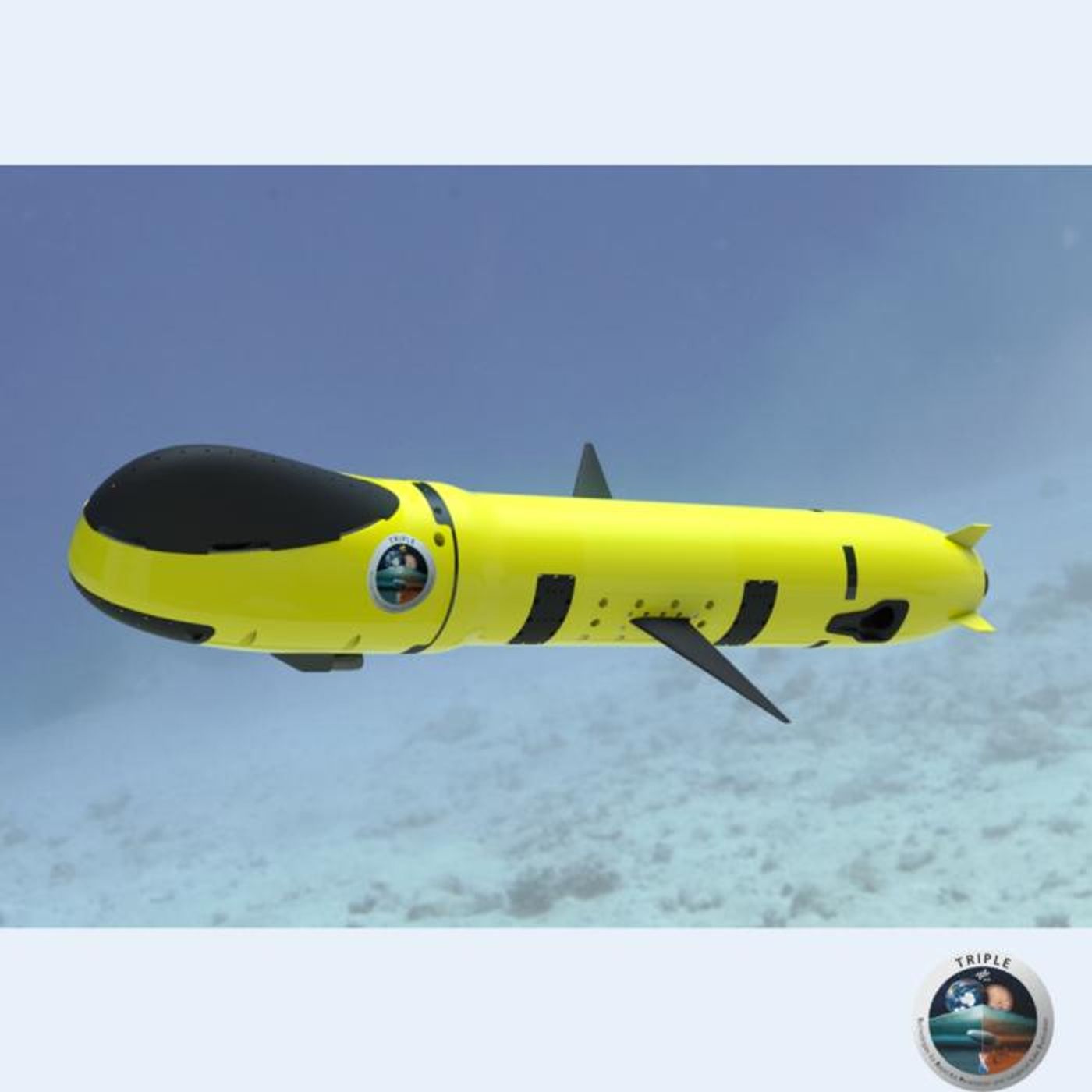The Quest for Life Beyond Earth: TRIPLE-nanoAUV 2's High-Tech Journey
Researchers from the MARUM Research Facility at the University of Bremen are coordinating an effort to potentially explore underwater life beneath the thick ice sheets of Antarctica and ocean worlds like Europa and Enceladus with the TRIPLE project. The most recent project is known as TRIPLE-nanoAUV 2 and will be working in tandem with TRIPLE-GNC and TRIPLE-LifeDetect, which are part of a larger project known as the DLR Explorer initiatives. TRIPLE stands for “Technologies for Rapid Ice Penetration and subglacial Lake Exploration” and the goal will be to develop technologies capable of penetrating thick ice sheets, exploring the underwater regions beneath them with appropriate scientific sensors, retrieving samples, and how to not contaminate the ecosystem, also known as planetary protection.
Model of the autonomous underwater vehicle (AUV) in a project being coordinated by MARUM in collaboration industry partners. The AUV will have length of about 50 centimeters (20 inches) and a diameter of around 10 centimeters (4 inches). (Credit: MARUM – Center for Marine Environmental Sciences, University of Bremen)
Once the three TRIPLE projects are developed, they will take part in a field demonstration in spring of 2026 under the Antarctic ice shelf located near the Neumayer III Station. As part of the demonstration, a small Autonomous Underwater Vehicle (AUV) and Launch and Recovery System (LRS) will be built at MARUM. The purpose of the LRS will be to allow the nanoAUV to dock with an underwater station for data transmission and battery recharge, and the size of the nanoAUV will be approximately 50 centimeters (20 inches) in length and 10 centimeters (4 inches) in diameter, which is smaller than traditional underwater vehicles. This small size is because the vehicle will have to penetrate the ice with a melting probe.
“Such nano-vehicles can help to provide a better overall understanding of marine ecosystems,” said Prof. Ralf Bachmayer, who is the project leader from MARUM – Center for Marine Environmental Sciences at the University of Bremen. “The new autonomous system is unique and should make it possible in the future to study the global liquid-water ocean below the icy surfaces of Jupiter’s moon Europa and Saturn’s moon Enceladus.”
TRIPLE-nanoAUV 2 is a sequel project to TRIPLE-nanoAUV1 and TRIPLE-MoDo, including the continued growth of autonomous vehicle and docking station concepts, as well. As noted, the probe will have to penetrate the thick ice sheet, which will be accomplished by TRIPLE-IceCraft. Separate projects are also working on the science payloads and navigation software, as well, and this collaborative effort marks the first time that space and deepwater research have worked in tandem for exploring extreme environments with robotic systems with the long-term goal of potentially searching for life on Europa and Enceladus.
What discoveries will the TRIPLE project make about underwater life, and how will it be applied to exploring worlds like Europa and Enceladus in the coming years and decades? Only time will tell, and this is why we science!
As always, keep doing science & keep looking up!
Sources: EurekAlert!, NASA, NASA (1), German Space Agency, MARUM









